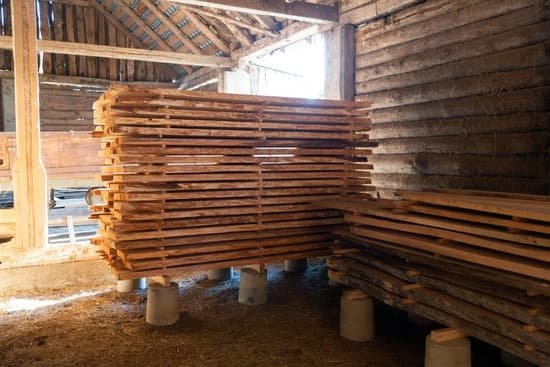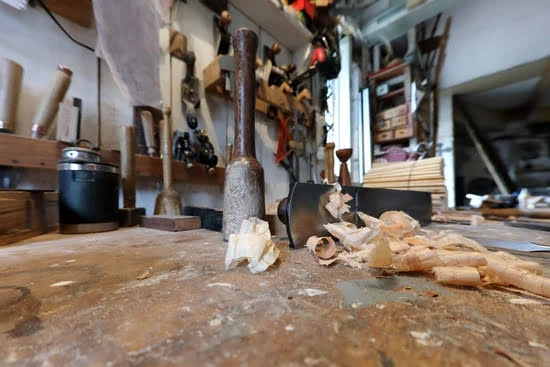Hand tool woodworking offers a unique experience that is filled with beauty, craftsmanship, and the pursuit of mastery. In a world driven by technology and automation, the choice to work with hand tools allows craftsmen to reconnect with the essence of their craft, capturing the soul and tradition of woodworking.
The history of hand tool woodworking dates back centuries, and it holds a nostalgic appeal that resonates with many enthusiasts. By using traditional tools and techniques, woodworkers can pay homage to those who came before them and carry on the legacy of craftsmanship. This deep connection to tradition adds an extra layer of meaning to each piece created by hand.
One of the joys of hand tool woodworking lies in its ability to slow things down. In a fast-paced world where efficiency often takes precedence, working with hand tools forces woodworkers to appreciate the process itself. Each stroke of a chisel or plane becomes deliberate and intentional, allowing for a more meditative experience. In this slower pace, craftsmen can find solace and rejuvenation as they shape raw materials into expressive works of art.
Hand tool woodworking also offers individuals a unique avenue for artistic expression. The simplicity and versatility of these tools enable woodworkers to unleash their creativity in ways that may be limited with power tools. With intricate carving, delicate joinery, and precise shaping, artists can use their hands as instruments to bring out the innate beauty within the wood, revealing their own artistic vision in every piece they create.
As we delve deeper into this article on why hand tool woodworking is worth considering, we will explore additional benefits beyond just the aesthetics. From promoting physical and mental well-being to embracing sustainable practices – these are all compelling reasons why hand tool woodworking has experienced a resurgence in popularity among both seasoned professionals and newcomers alike.
Stay tuned as we uncover not only how hand tool woodworking can enhance your skills but also how it nurtures a bond between craftsmen and materials like no other. Whether you’re a passionate woodworker seeking to explore new avenues of creativity or a beginner looking to embark on a fulfilling journey, hand tool woodworking may just be the perfect choice for you.
The History of Hand Tool Woodworking
Hand tool woodworking has a rich history that dates back thousands of years. Before the advent of power tools, craftsmen relied solely on their hands and simple hand tools to shape and manipulate wood. This traditional approach to woodworking is rooted in centuries-old techniques that have been passed down through generations, capturing the essence of tradition.
One of the earliest examples of hand tool woodworking can be traced back to ancient Egypt, where intricate wooden furniture and sculptures were created using basic tools such as chisels and saws. Throughout history, various civilizations around the world including the Greeks, Romans, and Chinese have embraced hand tool woodworking for both functional and artistic purposes.
The medieval period witnessed a flourishing of hand tool woodworking craftsmanship in Europe. Skilled artisans used planes, saws, and gouges to create elaborate wooden structures, furniture, and religious artifacts. During this time, master carpenters played a crucial role in designing and constructing gothic cathedrals with awe-inspiring wooden features.
| Time Period | Significance |
|---|---|
| Ancient Egypt | Intricate wooden furniture and sculptures created using basic hand tools such as chisels and saws. |
| Medieval Period | Flourishing craftsmanship in Europe with elaborate wooden structures like gothic cathedrals constructed using hand tools. |
In more recent centuries, hand tool woodworking continued to evolve alongside technological advancements. The Industrial Revolution introduced mass production and power tools into the woodworking industry. However, many craftsmen remained dedicated to preserving the traditions of hand tool woodworking.
Today, there is a resurgence of interest in this age-old practice as artisans and hobbyists rediscover the beauty of craftsmanship and the satisfaction that comes from mastering traditional woodworking techniques. Hand tool woodworking allows individuals to truly connect with the past, paying homage to the master craftsmen who came before them.
By embracing hand tool woodworking, craftsmen can capture the essence of tradition and preserve a centuries-old practice that has been passed down through generations. The history of hand tool woodworking is a testament to the enduring power of human skill, creativity, and dedication to craftsmanship. Whether it’s recreating ancient Egyptian furniture or crafting one-of-a-kind contemporary pieces, hand tool woodworking allows artisans to forge a connection with history while creating something timeless and unique.
The Joy of Slowing Down
Embracing the Present Moment
In today’s fast-paced world, finding moments of calm and tranquility can be a challenge. However, hand tool woodworking offers a unique opportunity to slow down and truly appreciate the present moment. Unlike power tools that can quickly and efficiently complete tasks, using hand tools requires patience and mindfulness.
When working with hand tools, woodworkers must carefully consider each stroke and movement. Every cut requires precision and attention to detail. This deliberate approach forces woodworkers to focus on the task at hand, allowing them to fully immerse themselves in the process. By embracing the joy of slowing down, woodworkers can find solace in their craft and experience a sense of relaxation that is increasingly rare in today’s hectic world.
Fostering a Sense of Fulfillment
Hand tool woodworking also provides a unique sense of fulfillment that is often absent in our modern lives. In a world where instant gratification is valued and sought after, the slow pace of hand tool woodworking allows for gradual progress and incremental achievements. Each joint meticulously crafted or surface smoothly planed becomes its own reward.
The satisfaction derived from creating something with one’s own hands cannot be easily replicated. The process of transforming raw materials into functional or decorative pieces instills a deep sense of accomplishment that can boost self-confidence and fosters personal growth. By engaging in hand tool woodworking, individuals are able to tap into their creativity and develop new skills while experiencing immense satisfaction along the way.
Promoting Mindfulness
Woodworking with hand tools not only cultivates patience but also promotes mindfulness – the practice of being fully present in each moment without judgment or distraction. As woodworkers engage with their projects, they must attentively observe the grain patterns in the wood, feel the texture under their fingertips, smell its distinct scent, and listen to the sounds produced by different tools interacting with the material.
This heightened awareness helps woodworkers tune into their senses and focus on the task at hand, allowing them to detach from external stressors and immerse themselves in the art of woodworking. By cultivating mindfulness through hand tool woodworking, individuals can experience a greater connection to themselves and their craft, leading to improved mental well-being and a greater sense of contentment.
Unleashing Creativity
Hand tools have long been revered for their ability to unleash creativity and act as a medium for artistic expression in woodworking. The tactile experience of manipulating these tools allows craftspeople to bring their visions to life with unparalleled precision and attention to detail.
Discovering Artistic Freedom
One of the key advantages of using hand tools in woodworking is the artistic freedom it provides. Unlike power tools, which can limit movement and control, hand tools give craftsmen the ability to explore their creativity without constraints. By allowing for greater control and finesse, hand tools enable woodworkers to carve intricate details and produce unique designs that showcase their individual style.
Embracing Traditional Techniques
Another aspect of unleashing creativity through hand tool woodworking is the connection to tradition and history. Woodworking has a rich heritage that dates back centuries, and utilizing hand tools allows craftsmen to tap into this legacy. By embracing traditional techniques such as joinery, carving, and shaping by hand, artisans are not only preserving the essence of craftsmanship but also infusing their work with a sense of timelessness.
Capturing the Beauty in Imperfections
Hand tool woodworking also enables artists to appreciate and embrace imperfections in their creations. The small variations that might arise from using manual methods add character and a human touch to the final piece. These imperfections can transform what could be seen as flaws into unique features that enhance the overall aesthetics of the work.
A Healthier Approach
One of the many benefits of hand tool woodworking is the promotion of physical and mental well-being. In today’s fast-paced, technology-driven world, it can be easy to feel disconnected from the physical aspect of creating something with our own hands. However, by engaging in hand tool woodworking, individuals have the opportunity to slow down and reconnect with their bodies and minds.
When working with hand tools, there is a sense of mindfulness that comes into play. Each cut, each stroke of the plane or saw requires focus and attention. This deliberate and intentional approach not only helps to improve physical coordination and dexterity but also promotes mental clarity and concentration. Woodworking becomes a form of meditation, allowing individuals to engage in an activity that releases stress and fosters a sense of calm.
In addition to the mental benefits, hand tool woodworking also provides physical exercise. Unlike power tools that often do most of the work for you, utilizing hand tools requires more effort and strength. Tasks such as sawing, planing, or carving help to promote muscle development and stamina. Additionally, using hand tools encourages proper body mechanics as individuals engage their whole body in various woodworking techniques. This can help prevent issues such as strain or injury commonly associated with sedentary lifestyles.
| Physical Benefits | Mental Benefits |
|---|---|
| Improved physical coordination and dexterity | Promotes mental clarity and concentration |
| Promotes muscle development and stamina | Fosters a sense of calm through deliberate focus |
| Encourages proper body mechanics | Provides an opportunity for stress release through meditative practice |
The Sustainable Choice
One of the key reasons why many individuals are choosing hand tool woodworking is because it is considered a sustainable choice that embraces eco-friendly practices. In an era where environmental sustainability is becoming increasingly important, hand tool woodworking offers numerous advantages in terms of reducing carbon footprint and promoting sustainable forestry.
Firstly, one of the main benefits of hand tool woodworking in terms of sustainability is that it minimizes the use of electricity and fossil fuels. Unlike power tools, which require electricity or fuel to operate, hand tools rely solely on human power. This not only reduces energy consumption and greenhouse gas emissions but also eliminates the need for electricity-consuming machinery.
Moreover, hand tool woodworking promotes the use of locally sourced wood from sustainable forests. Sustainable forestry practices involve harvesting timber in a way that maintains or enhances the health of forest ecosystems.
By using locally sourced wood, craftspeople can support local economies and reduce transportation costs associated with importing wood from distant locations. Additionally, by selectively cutting down trees rather than clear-cutting entire sections of forests, hand tool woodworkers contribute to reforestation efforts and help ensure future supplies of timber.
In addition to these environmental benefits, embracing eco-friendly practices in hand tool woodworking also contributes to a more holistic approach to craftsmanship. By understanding the origins and properties of their materials, artisans can develop a deeper appreciation for nature and foster a greater connection with their craft. This connection encourages a sense of responsibility towards preserving the environment for future generations and enables craftspeople to create products that truly embody sustainability.
Ultimately, by choosing hand tool woodworking as a sustainable choice, craftspeople are not only creating beautiful pieces but also making a positive impact on the environment. With its emphasis on reducing energy consumption and supporting sustainable forestry practices, hand tool woodworking stands as an eco-friendly alternative to traditional power-tool-based approaches.
Whether you are an experienced artisan or a beginner looking to learn woodworking skills while minimizing your carbon footprint, embracing this sustainable choice will undoubtedly leave you with a sense of fulfillment and a deeper connection to nature.
Mastering the Basics
Woodworking is a craft that requires a strong foundation of skills and knowledge. Mastering the basics is crucial in order to develop into a skilled woodworker. Hand tool woodworking offers a unique opportunity to build this foundation, as it allows for a deeper understanding of the materials and techniques involved.
One of the main advantages of hand tool woodworking is the emphasis on technique and skill. By using hand tools, woodworkers have to rely on their own abilities and precision to shape the wood. This approach forces individuals to develop patience, attention to detail, and an understanding of how different tools interact with the materials. It also encourages problem-solving skills as woodworkers navigate through challenges that may arise during the process.
To build a strong foundation in woodworking skills, it is important to start with the basics. One essential aspect is learning how to properly use and maintain hand tools. This includes sharpening blades, adjusting planes, and ensuring that tools are in good working condition. Acquiring these foundational skills allows woodworkers to work more efficiently and effectively.
Another fundamental skill in building a solid woodworking foundation is understanding wood grain. Hand tool woodworking provides an intimate experience with the material, allowing woodworkers to feel its texture, see its patterns, and manipulate it accordingly. Learning how different types of wood react to different techniques helps improve technique and produces better results.
Honing the Fine Details
Fine details can often make or break a woodworking project, and achieving unparalleled precision requires the use of hand tools. While power tools may offer efficiency and speed, they can lack the finesse and control that hand tools provide. From delicate carving to intricate joinery, honing the fine details with hand tools allows woodworkers to showcase their craftsmanship and attention to detail.
One of the key advantages of using hand tools for honing the fine details is the level of control it provides. With hand planes, chisels, and saws, woodworkers have the ability to make subtle adjustments and precise cuts that are not easily achievable with power tools. This level of control allows for greater accuracy in shaping and refining elements such as curves, contours, and angles.
Additionally, using hand tools for the finer details encourages woodworkers to slow down and fully engage with their work. This mindful approach helps to ensure that each cut is deliberate and intentional. It also allows for a deeper connection with the materials being worked with, as woodworkers must rely on touch and feel to guide their movements. This hands-on interaction fosters a sense of appreciation for both the material itself and the artistry involved in creating something by hand.
Furthermore, honing the fine details with hand tools can be a transformative experience for woodworkers. It requires patience, practice, and mastery of various techniques. As woodworkers develop their skills in using these tools effectively, they gain a sense of satisfaction from seeing their projects come together flawlessly. The meticulousness involved in honing fine details also cultivates perseverance and problem-solving abilities, as woodworkers navigate challenges such as grain direction or delicate corners.
The Bond with Materials
In the world of woodworking, there is something truly special about developing a deep bond with the materials you work with. Hand tool woodworking allows for a unique and powerful connection to be formed between the craftsman and the wood. This section will explore the significance of this connection and how it enhances the overall woodworking experience.
When working with hand tools, every stroke, every cut, and every detail becomes an intimate interaction between the craftsman and the wood. Unlike power tools that can speed up the process, hand tools demand patience, precision, and a heightened level of attention. As a result, woodworkers are able to truly understand their materials in a way that goes beyond just function or aesthetics.
Developing a deeper connection with wood not only brings joy and satisfaction to the craftsman but also produces better quality work. By understanding how different species of wood behave under specific conditions, one can choose the right techniques and tools to bring out their inherent beauty. The ability to read the grain of each piece and make intentional decisions based on that knowledge allows for a more harmonious collaboration between craftsman and material.
Furthermore, this bond with materials goes hand in hand with sustainability. When one fully appreciates and respects wood as a precious resource, they are less likely to waste or misuse it. Hand tool woodworking encourages a mindset of careful consideration and thoughtful practices that prioritize both aesthetic outcomes and ethical responsibility.
In conclusion, developing a deeper connection with wood is one of the many reasons why hand tool woodworking is so appealing. It elevates craftsmanship into an art form where creativity thrives alongside mastery. By fostering this bond with materials throughout each step of the process, woodworkers create pieces that not only showcase their skill but also embody respect for nature’s gifts.
Frequently Asked Questions
Why do we use hand tools in workshop?
Hand tools are an essential component of any workshop because they offer versatility, precision, and control in various tasks. They allow craftsmen and artisans to work on smaller projects or intricate details where power tools might prove cumbersome or excessive.
Hand tools, such as hammers, screwdrivers, chisels, and wrenches, provide the necessary force and accuracy to complete tasks like driving nails, tightening screws, shaping wood or metal surfaces precisely, or removing tightly fitted components. Additionally, hand tools often require less maintenance and are more cost-effective compared to their power tool counterparts.
Why use hand tools instead of power tools?
While power tools have their advantages in terms of speed and efficiency for heavy-duty tasks or large-scale projects, hand tools offer benefits that make them preferred in many situations. Firstly, hand tools allow for enhanced precision due to the increased control one gains over the tool’s actions. This precision can be crucial when working with delicate materials or undertaking fine-detail work that needs meticulous attention.
Secondly, hand tools tend to be quieter and generate less dust or debris than power tools since they don’t utilize motors or create high-speed rotations. Lastly, hand tools are generally more portable and don’t rely on a continuous power supply – this makes them suitable for remote job sites or areas without electricity access.
Why do we need to use hand tools and equipment?
The utilization of hand tools and equipment is imperative because they serve various purposes throughout different industries and trades. In sectors like construction, carpentry, plumbing, automotive repairs, gardening, electrical work, and countless others – hand tools play a fundamental role in accomplishing daily tasks efficiently and effectively. Furthermore, hand tools often act as reliable backup options when power outages occur or when working in locations where electricity isn’t readily available.
They also provide a sense of tactile feedback that enables workers to assess the pressure applied during use – this can help prevent damage to materials being worked on as well as reduce potential injuries caused by excessive forces applied by machinery. When used correctly and with proper safety measures, hand tools can significantly contribute to the successful completion of projects in numerous professional fields.

Hi everyone! I’m a woodworker and blogger, and this is my woodworking blog. In my blog, I share tips and tricks for woodworkers of all skill levels, as well as project ideas that you can try yourself.





